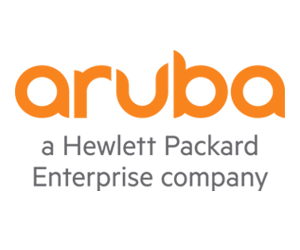Why Switches Are Key for Higher Education Network Modernization
It’s technology that no modern network can do without.
For multiple computers to communicate — to send data between systems quickly and efficiently — the one piece of hardware most critical to success may be the network switch.
“Wired desktops, wireless access points, printers, security cameras, Internet of Things devices — they all depend on switches for connectivity,” says Sue Gillespie, senior product marketing manager for campus switching at Aruba.
Among higher ed institutions, Gillespie adds, switching has become more important than ever as the rise of remote learning, the use of cloud-based solutions and an explosion in the number of devices on college campuses stretch aging networks to their limits. “They’re expanding and modernizing to keep up with demand, but they’re also focused on ensuring their networks stay secure and don’t become too difficult to manage,” she says.
Here’s a look at how Aruba CX switches are helping the company’s higher ed customers bring their networks up to the highest standard without increasing the workload for IT administrators.
DISCOVER: Aruba products and solutions for higher ed.
The CX Portfolio: Always-On Performance
The Aruba cloud-native CX portfolio includes everything from access switches to campus core and data center switches. “One of our key differentiators for higher ed is our modern switching architecture that supports cutting-edge hardware designed for longevity and operational efficiency,” Gillespie notes.
The company’s seventh-generation, programmable-switching application-specific integrated circuits guarantee network switches have plenty of capacity to avoid traffic bottlenecks, she explains. Likewise, through Aruba’s VSX Live Upgrade feature, always-on connectivity is a sure thing.
“If you’re a university and you need to do an update, you can’t just shut your network down,” Gillespie says. With VSX, traffic through one switch can be handled by another during the updating process, and everything can be completed in a matter of minutes.
EXPLORE: The benefits of a managed switch for securing smaller classroom.
Get Faster Troubleshooting with the Analytics Engine
A second arrow in the CX switch quiver involves the technology’s tools for network visibility and troubleshooting. The primary player in this arena: the built-in Aruba Network Analytics Engine.
“With NAE, it’s a lot like having an extra IT expert in the switch,” Gillespie says.
NAE provides administrators faster, real-time visibility, she explains, and uses a built-in time series database for event history and correlation to proactively detect problems before they have a chance to impact users. “It issues an alert when an anomaly is identified so you can quickly respond and take care of it.”
FIND OUT: How to balance budgets, security and flexibility during during IT modernization.
Secure Access with Aruba Dynamic Segmentation
The ever-growing number of mobile and IoT devices connecting to higher ed campus networks is the driving force behind the company’s automated and secure-access control solution.
Aruba Dynamic Segmentation, Gillespie says, is a unified policy enforcement engine that applies role-based access control to automatically segment and secure network traffic, applying consistent policies across wired, wireless and WAN networks.
Instead of having to manually configure individual virtual LANs for different IoT devices, access points or users from different university departments, she explains, “Dynamic Segmentation ensures that no matter where or how you connect, you’re assigned that unified policy. This greatly reduces the time administrators need to spend managing policies for adds, moves and changes.”
LEARN MORE: Why managed service providers are important for higher education.
Switch Management: Aruba Central for Unified Operations
Finally, Gillespie says, to simplify switch management as much as possible — and to facilitate device management overall — Aruba has developed a cloud networking solution it calls “Aruba Central.”
“It’s everything you need managementwise through a single pane of glass, and it uniquely brings a unified view of all devices and clients, wireless and wired, so you have an overall better idea of what’s happening on your network,” she explains.
Aruba Central allows administrators to oversee every aspect of their university’s network, including wired and wireless LANs, WANs, and VPNs. Onboarding, configuring and provisioning of devices is made easier thanks to a setup wizard that automatically adds account subscriptions and assigns licenses; and for CX switches, prebuilt express configurations minimize the work required to make networkwide changes.
“Aruba Central is really all about unifying, optimizing and simplifying network operations,” Gillespie says. “So many of our university customers are relying on multiple network management tools. This ties everything together to give them efficiencies most never had.”
Brought to you by:











